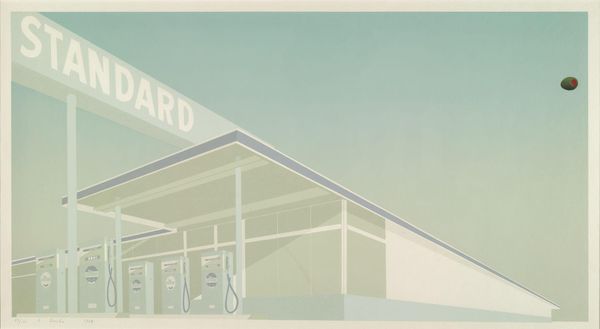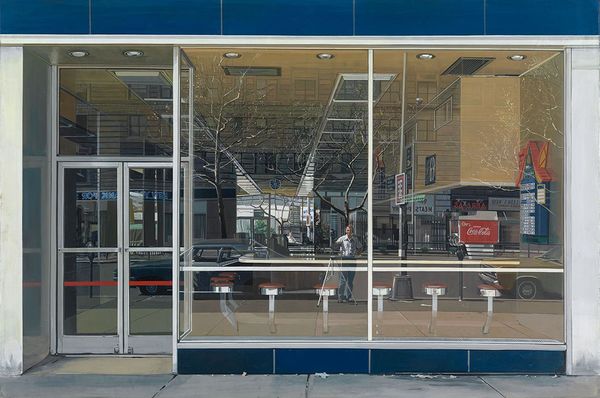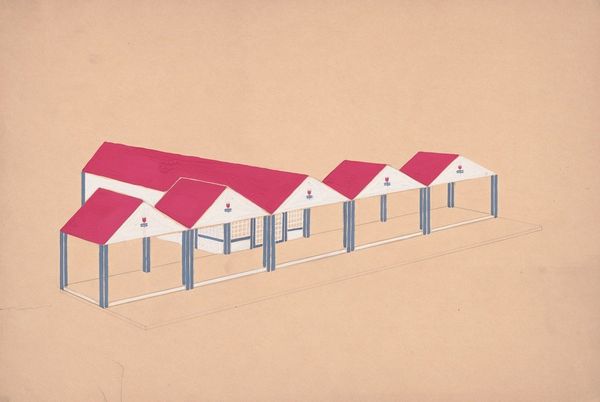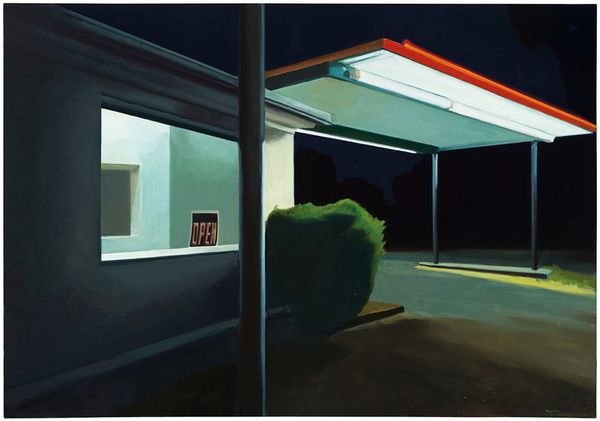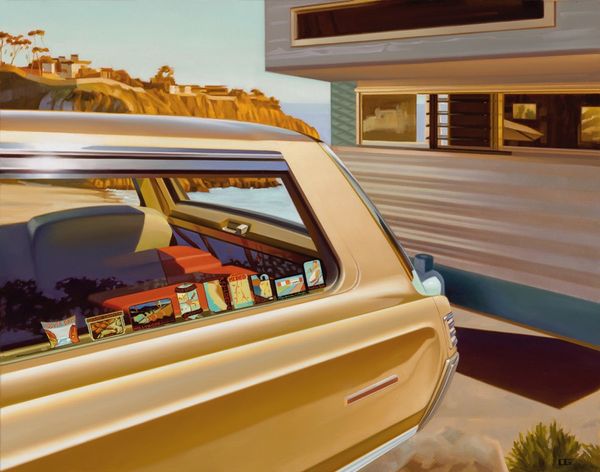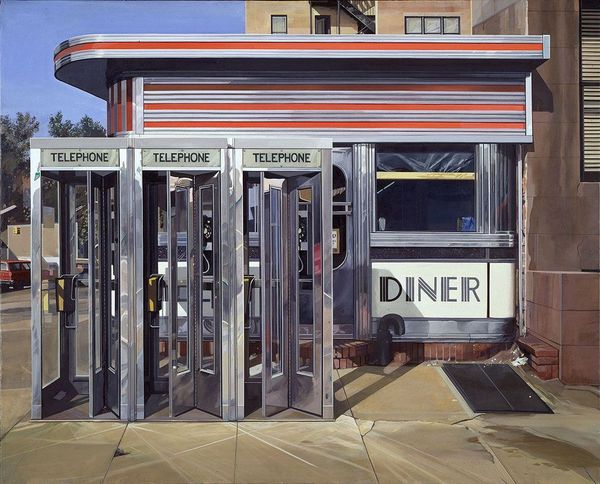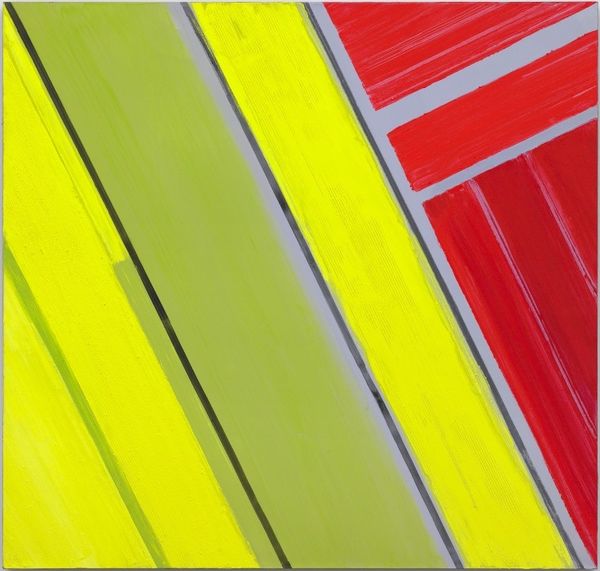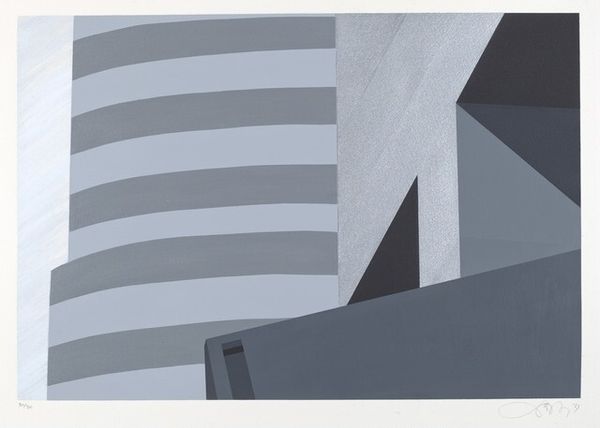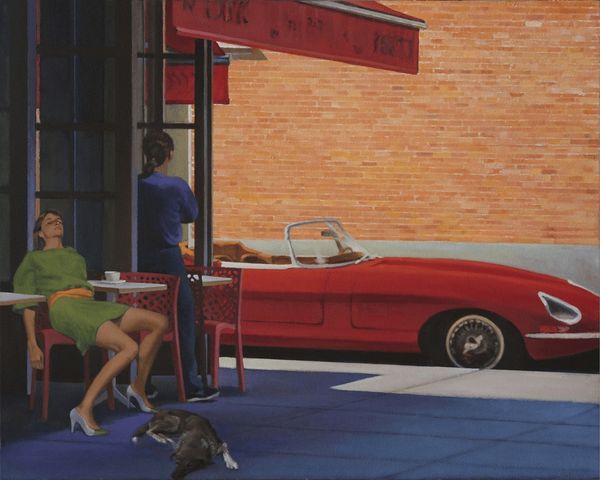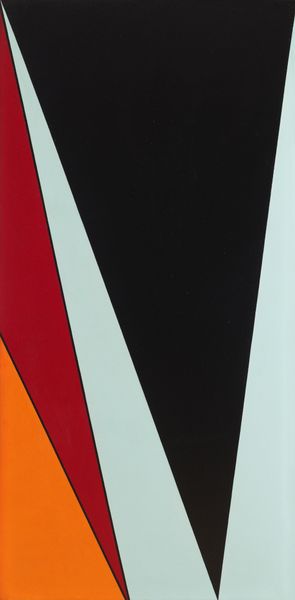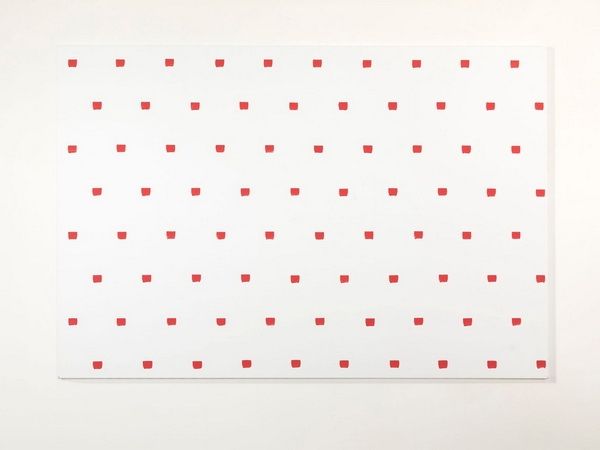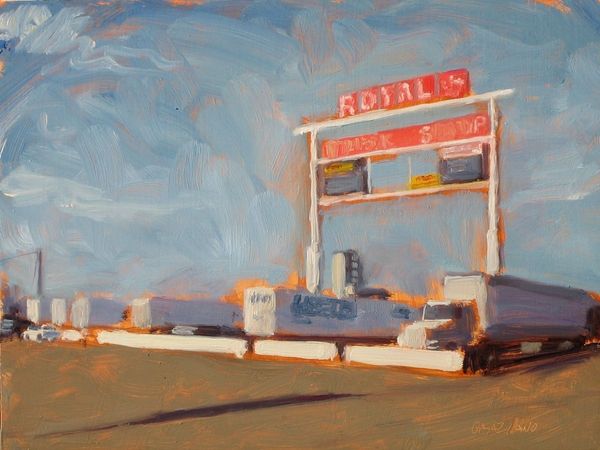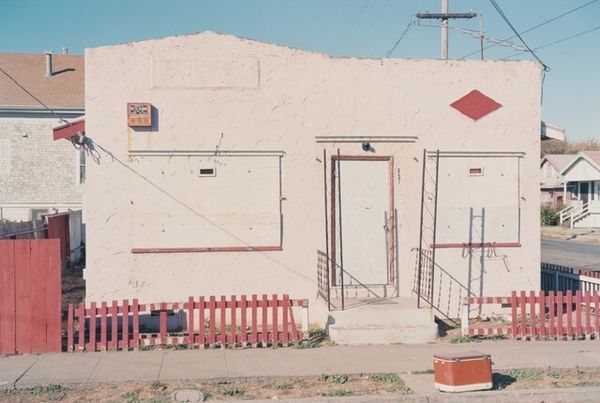
painting
#
popart
#
painting
#
colour blocking
#
pop art
#
pop-art
#
line
#
cityscape
Copyright: Edward Ruscha,Fair Use
Curator: At first glance, this artwork hits you with this very clean, graphic vibe. It’s “Standard Station” by Edward Ruscha, from 1966. Editor: It's that high contrast that really grabs you. The colors are so pure and...well, gas station chic? But there's a haunting emptiness to it. Is anyone even there? Curator: Right. The lack of figures contributes to the alienation. It’s from his iconic series depicting gas stations and commercial buildings, part of the whole Pop Art movement latching onto everyday American culture. The image wasn't completely from his head: he used photos and sometimes combined them into new pieces. Editor: I think about how Ruscha renders the familiar strange. We’ve all seen gas stations. They are the most ordinary aspect of daily life. It feels almost...clinical, like an architectural rendering drained of warmth, as if our culture's cathedrals were going to be fuel depots instead of God. Curator: And remember this was the mid-sixties. The rise of the automobile culture really changed American life, re-shaping not just the landscape but even our own social experience and urban design. Editor: I find this rendering especially striking. All that clear sky. It's classic Ruscha, giving that whole composition plenty of breathing space. It makes the station itself almost…fragile. That sunset palette feels ominous to me, perhaps I'm just connecting it to the oil industry's destructive footprint? Curator: It's that tension, I think, that elevates it beyond just being a picture of a gas station. It prompts conversations about consumerism, environmental degradation, the cult of automobiles, all the stuff of mid-century America’s growth. Editor: Absolutely, you begin to peel away at it like an onion, all those thematic layers hiding beneath that initially sleek exterior. There's more sadness, and ultimately depth, to it, once you sit with the imagery long enough to move past the immediate recognition of this very accessible and strangely calming scene. Curator: Very well said. It's a compelling image. It offers both a mirror to a specific moment in time and questions about its social cost.
Comments
No comments
Be the first to comment and join the conversation on the ultimate creative platform.
